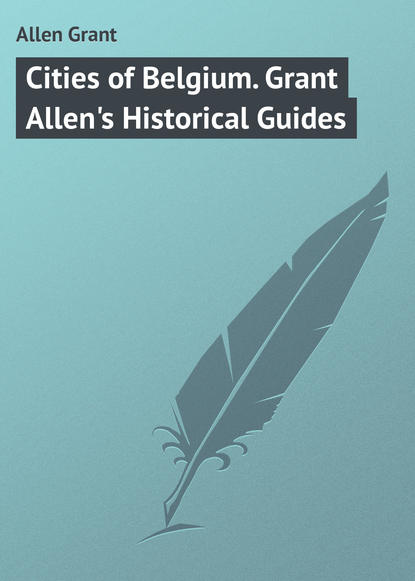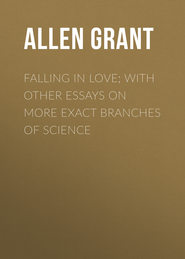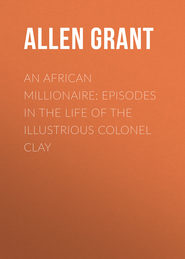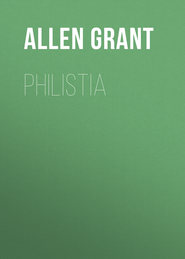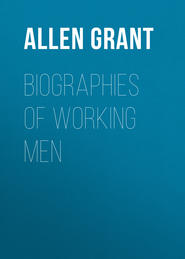По всем вопросам обращайтесь на: info@litportal.ru
(©) 2003-2024.
✖
Cities of Belgium. Grant Allen's Historical Guides
Настройки чтения
Размер шрифта
Высота строк
Поля
Right of the door, Rubens and Brueghel, 319: Small copy of the Dead Christ. Schut, 327: The Beheading of St. George. A pagan priest, behind, endeavours to make him worship an image of Apollo. Above, angels wait to convey his soul to Heaven. This is a somewhat confused picture, with a spacious composition and a fine luminous foreground: it is considered its painter’s masterpiece. Intended for the altar of the Archers (whose patron was St. George), in Antwerp Cathedral.
673. Good still life by Gysels.
669. F. Francken: Portraits of a wealthy family in their own picture gallery.
107. C. De Vos: *Portraits of the Snoek family, in devotion to St. Norbert. This picture requires a little explanation. St. Norbert was the Catholic antagonist of the heretic Tankelin at Antwerp in the 12th century. In this frankly anachronistic picture the Snoek family of the 17th century, portly, well-fed burghers, are represented restoring to the mediæval saint the monstrance and other church vessels removed from his church during the Calvinist troubles. The Snoeks are living personages; the Saint is envisaged as a heavenly character. It is, in short, a highly allegorical picture of the family showing their devotion to true Catholicism, and their detestation of current heresy. In the background stands the town of Antwerp, with the Cathedral and St. Michael. (From the burial chapel of the Snoek family at St. Michael.) There is a Brueghel in Brussels Museum, representing St. Norbert preaching against Tankelin.
307. Beyond the door, Rubens: **Triptych, to adorn a tomb, for the funerary chapel of his friend Rockox. Compare, for size and purpose, the Moretus tomb in the Cathedral. It shows the painter’s early careful manner, and represents in its central piece the Incredulity of St. Thomas. On the wings, the Burgomaster Nicolas Rockox, and his wife, for whose tomb it was painted. The wings are finer than the central portion. This early work, still recalling Van Veen’s academic tone, should be compared with the Van Veens and also with Rubens’s fine portrait of himself and his brother, with Lipsius and Grotius, in the Pitti at Florence. It marks the earliest age, when he was still content with comparatively small sizes, and gave greater elaboration to his work, but without his later dash and vigour. M. Rooses thinks ill of it.
781. *Fine farmyard scene by Rubens, with the story of the Prodigal Son in the foreground. One of the many signs of his extraordinary versatility.
Beyond, on either side of the great Rubens, to be noticed presently, are two pictures by his master, Otto van Veen: 480, The Calling of Matthew, and 479, Zacchæus in the Fig-Tree. These two careful works recall the later Italian Schools, more particularly Titian, and are good examples of that careful academic transitional Flemish art which Rubens was to transform and revivify by the strength of his own exuberant and powerful personality. They are admirably placed here for comparison with
297. Rubens’s famous altar-piece of the Crucifixion, for the Church of the Franciscans, commonly known as the **Coup de Lance. In this splendid work Rubens is seen in one of his finest embodiments. The figure of Christ has fine virility. St. Longinus, to the L., on a white horse, is in the very act of piercing his side. The Magdalen, embracing the foot of the Cross, as ever, throws up her arms with supplicating gesture. To the R. is the Madonna. Behind, a soldier is engaged in breaking the limbs of the Impenitent Thief (always on Christ’s L.) who writhes in his torture. The whole work is full of Rubens’s life and bustle, well contrasted with the academic calm of the Van Veens beside it. Even those who do not love Rubens (and I confess I am of them) must see in such a work as this how his great powers succeeded in effects at which his contemporaries aimed ineffectually. Boldly dramatic, but not sacred.
300. **Triptych by Rubens, commonly known as the Christ à la Paille, painted for a tomb in the Cathedral (compare the Moretus one). In the centre is a Pietà: Joseph of Arimathea supporting the dead body of the Christ on the edge of a stone covered with straw. Behind, Our Lady and another Mary, with the face of St. John just appearing in the background. This “too famous” work is rather a study of the dead nude than a really sacred picture. Some of its details overstep the justifiable limits of horror. The wings are occupied by, L., a so-called Madonna and Child, really a portrait of a lady and boy – (his wife and son?): R., St. John the Evangelist (patron of the person for whose tomb it was painted), accompanied by his eagle.
706. Admirable *portrait by Rubens of Gaspard Groaerts, town secretary. The bust is Marcus Aurelius.
171. J. Fyt: Excellent screaming eagles, with a dead duck. One of the earliest and best presentations of wild life at home.
315. Rubens: Small copy (with variations) of the Descent from the Cross in the Cathedral (by a pupil).
708. One of the best *portraits by Rubens in the Gallery, subject unknown: lacks personal dignity, but Rubens has made the most of him.
The rest of this wall is occupied by some tolerable gigantic altar-pieces and other good works of the School of Rubens. Most of them derive their chief interest from their evident inferiority in design and colour to the handicraft of the Master. They are the very same thing – with the genius omitted.
End wall, 314, Rubens: called the *Holy Trinity. The Almighty supports on His knees the figure of the dead Christ. Behind, hovers the Holy Ghost. On either side, boy angels hold the crown of thorns, the three nails, and the other implements of the Passion. This is really a study in the science of foreshortening, and in the painting of the dead nude, largely suggested, I believe, by a still more unpleasing Mantegna in the Brera at Milan.
719. Above. Excellent fishmongery by Snyders.
212. Janssens: The Schelde bringing wealth to Antwerp, in the allegorical taste of the period.
712. Rubens: St. Dominic.
172. Fyt: Excellent dogs and game.
299. Rubens: An **allegorical picture to enforce the efficacy of the prayers of St. Theresa. The foundress of the Scalzi, dressed in the sober robe of her Carmelite Order, is interceding with Christ for the soul of Bernardino de Mendoza, the founder of a Carmelite convent at Valladolid. Below, souls in Purgatory. In the left-hand corner stands Bernardino, whom, at St. Theresa’s prayer, angels are helping to escape from torment. A fine luminous picture of a most unpleasing subject. Painted for the altar of St. Theresa in the church of her own barefooted Carmelites.
405. Van Dyck: Magnificent portrait of Cesare Alessandro Scaglia, in black ecclesiastical robes, with lace cuffs and collar, and the almost womanish delicate hands of a diplomatic, astute, courtier-like ecclesiastic. The thoughtful eyes and resolute face might belong to a Richelieu.
306. Rubens: **The Education of the Virgin, painted for a chapel of St. Anne. A charming domestic picture of a wealthy young lady of Flanders, pretending to be Our Lady, in a beautifully painted white silk gown. Beside her, her mother, a well-preserved St. Anne, of aristocratic matronly dignity. Behind is St. Joachim, and above, two light little baby angels. The feeling of the whole is graceful courtly-domestic.
481, 482. Two scenes from the life of St. Nicholas, by Van Veen, the master of Rubens. R., he throws through a window three purses of gold as dowries for the three starving daughters of a poor nobleman. (This ornate treatment contrasts wonderfully with the simpler early Italian pictures of the same subject.) L., he brings corn for the starving poor of Myra. Both pictures represent the bourgeois saint in his favourite character of the benefactor of the poor. They are here well placed for contrast with
298. Rubens: **Adoration of the Magi, considered to be his finest embodiment of this favourite subject, and one of his masterpieces. R., Our Lady and Child, with the ox in the foreground, and St. Joseph behind her. L., two kings make their offerings. Behind them, the third, a Moor, in an Algerian costume, leering horribly. Above, the ruined temple, the shed, and the camels. M. Max Rooses calls this work “the chef d’œuvre by which Rubens inaugurated his third manner,” and other critics praise loudly its gorgeous colouring, its audacious composition, its marvellous certainty. To me, the great canvas, with its hideous ogling Moor, is simply unendurable; but I give the gist of authoritative opinion.
312. Rubens: *The Holy Family, known as La Vierge au Perroquet. It is chiefly remarkable as a rich and gorgeous piece of colouring, with a charming nude boy of delicious innocence.
313. Rubens: *Crucifixion. One of his best embodiments of this subject.
Opposite wall.
709. Rubens, partly made-up: Jupiter and Antiope. A mythological subject, treated in a somewhat Italian style, with a quaint little huddling Cupid in the foreground.
Beyond this, three designs by Rubens for Triumphal Cars and Arches, on the occasion of the entry of Ferdinand of Austria in 1635.
The whole of this room contains several other excellent altar-pieces, many of which are Franciscan.
Room J
R. and L. of the door, 105, C. De Vos: Portraits of a husband and wife, with their sons and daughters.
370. Van Cortbemde: The Good Samaritan, pouring in oil and wine in a most literal sense. In the background, the priest and the Levite.
109. Fine portrait of a well-fed Flemish merchant, William Van Meerbeck, by C. De Vos. Behind him his patron, St. William.
748. Van Thulden: Continence of Scipio.
265. Murillo (Spanish School). St. Francis. A reminiscence of the older subject of his receiving the Stigmata. It has the showy and affected pietism of the Spaniards. A mere study.
214. Jordaens: Pharaoh in the Red Sea.
Room N contains several good portraits and views of the town and other places, of the 17th and 18th centuries, many of them excellent as studies of Old Antwerp, enabling us to appreciate the greatness of the architectural losses which the city has sustained. These, however, are essentially works for the visitor to inspect at his leisure. They need little or no explanation. Notice especially 728, 348, 726.
775. Good unknown Flemish portrait.
22. Portraits by Boeyermans.
Room O, beyond, is filled for the most part with canvases of the school of Rubens, mainly interesting for comparison with the works of the master, and needing little comment.
Now return to
Room G,
containing the Dutch Pictures. Many of these are masterpieces of their sort, but need here little save enumeration. The Reformation turned Dutch art entirely upon portraiture, landscape, and domestic scenes. Dutch art is frankly modern.
338. Jan Steen: Samson and the Philistines, as Jan Steen imaged it.
767. Admirable calm sea-piece, by Van der Capelle.
752. Weenix poaching on Hondecoeter’s preserves.
502. A beautiful little Wynants.
399. W. van de Velde the younger: Calm sea, with ships.
398. Admirable cows, by A. van de Velde.





